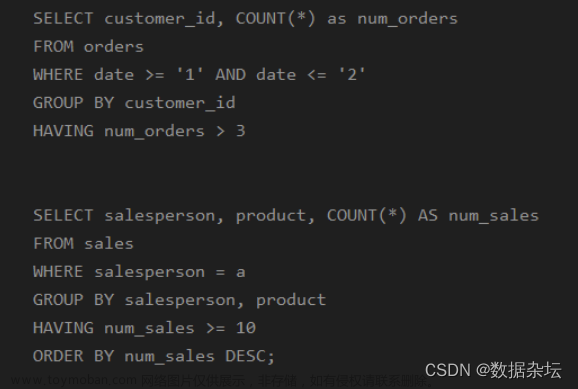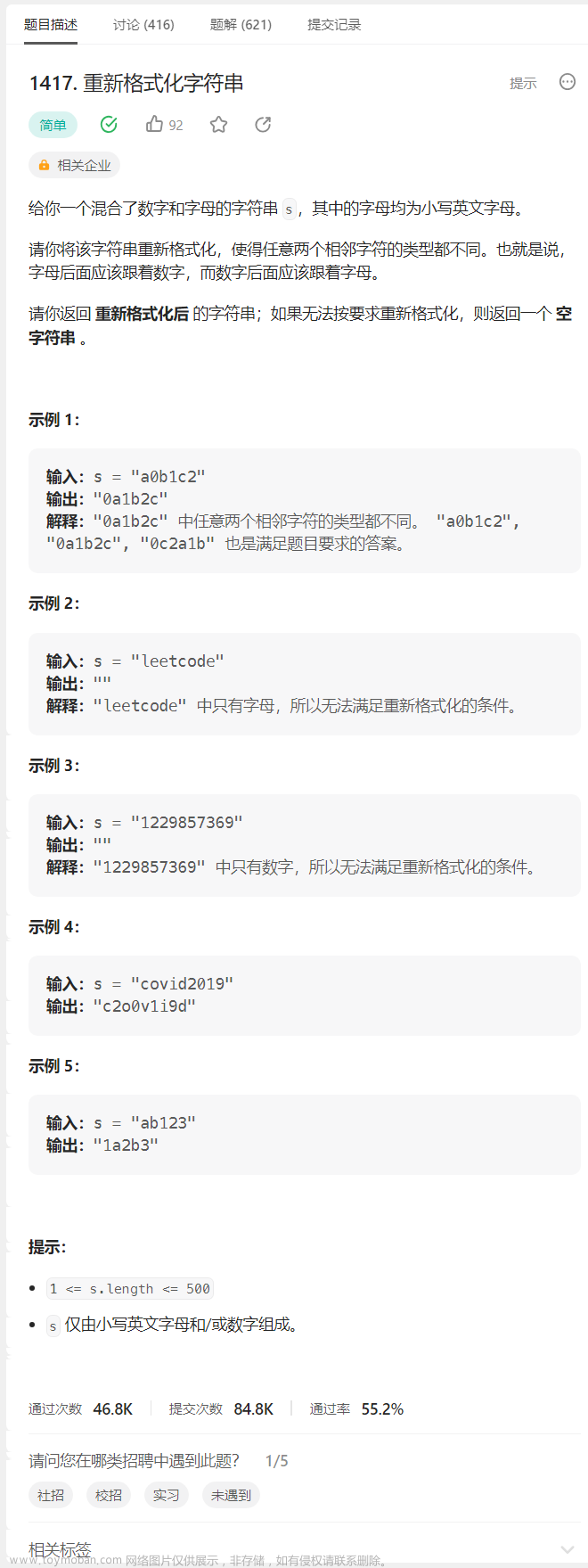Python 字符串格式化
Python中的字符串格式化是指将一个字符串中的占位符替换为指定的值。Python中有多种字符串格式化的方法,以下是其中的几种常见方法:
使用百分号(%)进行字符串格式化
使用百分号(%)进行字符串格式化是Python中最早的字符串格式化方法。它的基本语法如下:
"格式化字符串" % (值1, 值2, ...)
其中,格式化字符串中使用占位符来表示需要替换的位置,占位符以%开始,后面跟着一个或多个字符,表示需要替换的值的类型。常见的占位符有:
%d:整数
%f:浮点数
%s:字符串
%c:字符
%x:十六进制整数
例如:
name = 'Tom'
age = 18
print('My name is %s, and I am %d years old.' % (name, age))
输出结果为:
My name is Tom, and I am 18 years old.
使用format()方法进行字符串格式化
使用format()方法进行字符串格式化是Python中常用的字符串格式化方法之一。它的基本语法如下:
"格式化字符串".format(值1, 值2, ...)
其中,格式化字符串中使用占位符来表示需要替换的位置,占位符以{}表示。如果需要在占位符中指定值的类型,可以在{}中使用冒号(:)进行格式化。例如:
name = 'Tom'
age = 18
print('My name is {}, and I am {} years old.'.format(name, age))
输出结果为:
My name is Tom, and I am 18 years old.
使用f-string进行字符串格式化
使用f-string进行字符串格式化是Python 3.6及以上版本中新增的字符串格式化方法。它的基本语法如下:
f"格式化字符串"
其中,格式化字符串中使用占位符来表示需要替换的位置,占位符以{}表示。如果需要在占位符中指定值的类型,可以在{}中使用冒号(:)进行格式化。例如:
name = 'Tom'
age = 18
print(f'My name is {name}, and I am {age} years old.')
输出结果为:
My name is Tom, and I am 18 years old.
Python 三引号
在 Python 中,三引号用于创建多行字符串,可以使用单引号或双引号来表示。三引号中的文本可以包含换行符、引号等特殊字符,而无需使用转义字符。以下是一些示例代码,演示了 Python 中三引号的使用:
a = '''This is a multi-line string.
It can span multiple lines.'''
print(a)
b = """This is another multi-line string.
It can also span multiple lines."""
print(b)
输出结果为:
This is a multi-line string.
It can span multiple lines.
This is another multi-line string.
It can also span multiple lines.
需要注意的是,三引号中的文本会保留原始格式,包括空格和换行符。
如果不希望保留原始格式,可以使用字符串方法 strip() 来删除首尾的空格和换行符。例如:
c = ''' This is a multi-line string.
It can span multiple lines.
'''
print(c.strip())
输出结果为:
This is a multi-line string.
It can span multiple lines.
Unicode 字符串
在 Python 中,Unicode 字符串是一种特殊的字符串类型,用于表示任意字符集中的字符。Unicode 字符串以“u”开头,例如 u’Hello, world!'。在 Python 3 中,所有字符串都是 Unicode 字符串。
Unicode 字符串可以包含任何 Unicode 字符,包括 ASCII 字符和非 ASCII 字符。Unicode字符串可以使用转义序列来表示任意 Unicode 字符,例如 \uXXXX 和 \UXXXXXXXX,其中 XXXX 和 XXXXXXXX
分别表示 Unicode 字符的十六进制编码。
以下是一些示例代码,演示了 Python 中 Unicode 字符串的使用:
创建 Unicode 字符串
a = u'Hello, world!'
b = u'你好,世界!'
c = u'\u2603\u2764\u2600' # 表示雪花、心形和太阳的 Unicode 字符
print(a)
print(b)
print(c)
输出结果为:
```python
Hello, world!
你好,世界!
☃❤☀
需要注意的是,Python 2 中默认的字符串类型是 ASCII 字符串,如果需要使用 Unicode字符串,需要在字符串前面添加“u”前缀。而在 Python 3 中,所有字符串都是 Unicode 字符串,无需添加前缀。
总之,Unicode 字符串在 Python 中是非常有用的,可以帮助我们处理各种字符集中的字符。
Python 的字符串内建函数
Python中的字符串内建函数是指可以直接使用的与字符串相关的函数,以下是一些常见的字符串内建函数:
len():返回字符串的长度。
capitalize():将字符串的第一个字符转换为大写字母。
lower():将字符串中的所有字符转换为小写字母。
upper():将字符串中的所有字符转换为大写字母。
title():将字符串中每个单词的首字母大写。
swapcase():将字符串中的大小写字母互换。
count():返回字符串中指定子字符串的出现次数。
find():查找字符串中指定子字符串的位置,如果找到返回第一次出现的位置,否则返回-1。
index():查找字符串中指定子字符串的位置,如果找到返回第一次出现的位置,否则会抛出异常。
replace():将字符串中指定的子字符串替换为另一个字符串。
split():将字符串按照指定的分隔符分割成多个子字符串,并返回一个列表。
strip():去除字符串两端的空格或指定字符。
join():将多个字符串拼接成一个字符串。
isdigit():判断字符串是否只包含数字字符。
isalpha():判断字符串是否只包含字母字符。
isspace():判断字符串是否只包含空格字符。
isupper():判断字符串中所有字母是否都是大写字母。
islower():判断字符串中所有字母是否都是小写字母。
startswith():判断字符串是否以指定的子字符串开头。文章来源:https://www.toymoban.com/news/detail-841707.html
endswith():判断字符串是否以指定的子字符串结尾。文章来源地址https://www.toymoban.com/news/detail-841707.html
# len() 示例
s = "Hello, World!"
print(len(s)) # 输出:13
# capitalize() 示例
s = "hello, world!"
print(s.capitalize()) # 输出:"Hello, world!"
# lower() 示例
s = "Hello, World!"
print(s.lower()) # 输出:"hello, world!"
# upper() 示例
s = "Hello, World!"
print(s.upper()) # 输出:"HELLO, WORLD!"
# title() 示例
s = "hello, world!"
print(s.title()) # 输出:"Hello, World!"
# swapcase() 示例
s = "Hello, World!"
print(s.swapcase()) # 输出:"hELLO, wORLD!"
# count() 示例
s = "hello, world! hello, world!"
print(s.count("hello")) # 输出:2
# find() 示例
s = "hello, world!"
print(s.find("world")) # 输出:7
# index() 示例
s = "hello, world!"
print(s.index("world")) # 输出:7
# replace() 示例
s = "hello, world!"
print(s.replace("world", "Python")) # 输出:"hello, Python!"
# split() 示例
s = "hello,world,Python"
print(s.split(",")) # 输出:['hello', 'world', 'Python']
# strip() 示例
s = " hello, world! "
print(s.strip()) # 输出:"hello, world!"
# join() 示例
s1 = "hello"
s2 = "world"
print("-".join([s1, s2])) # 输出:"hello-world"
# isdigit() 示例
s = "12345"
print(s.isdigit()) # 输出:True
# isalpha() 示例
s = "hello"
print(s.isalpha()) # 输出:True
# isspace() 示例
s = " "
print(s.isspace()) # 输出:True
# isupper() 示例
s = "HELLO"
print(s.isupper()) # 输出:True
# islower() 示例
s = "hello"
print(s.islower()) # 输出:True
# startswith() 示例
s = "hello, world!"
print(s.startswith("hello")) # 输出:True
# endswith() 示例
s = "hello, world!"
print(s.endswith("world!")) # 输出:True
到了这里,关于9.Python从入门到精通—Python 字符串格式化,三引号,Unicode 字符串的文章就介绍完了。如果您还想了解更多内容,请在右上角搜索TOY模板网以前的文章或继续浏览下面的相关文章,希望大家以后多多支持TOY模板网!










